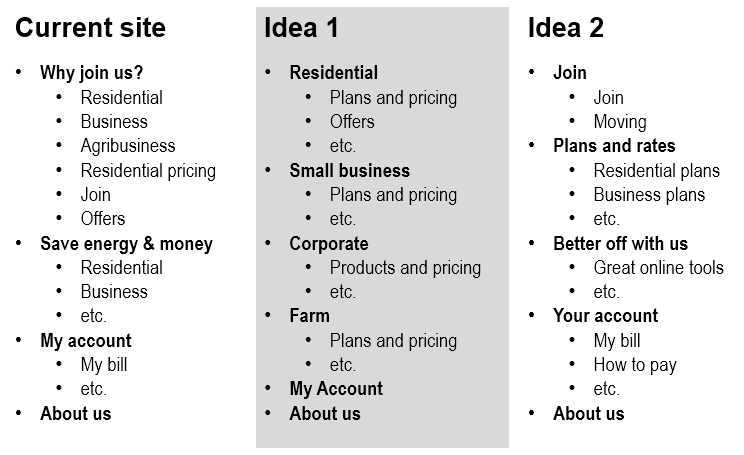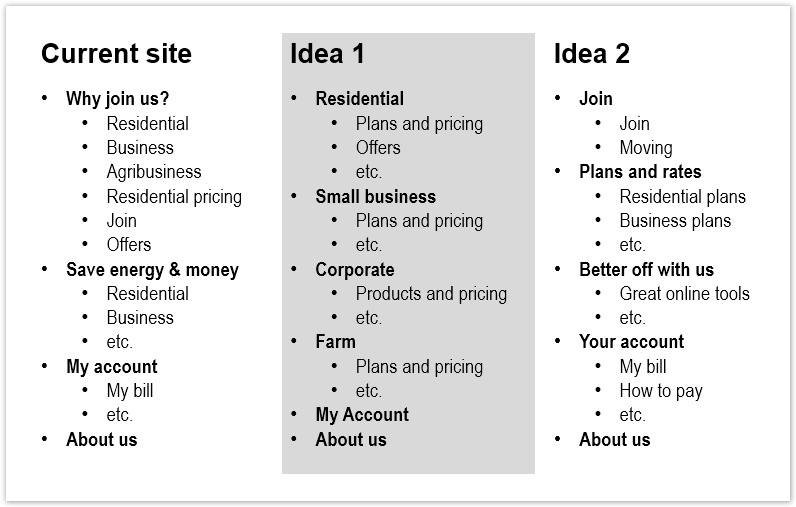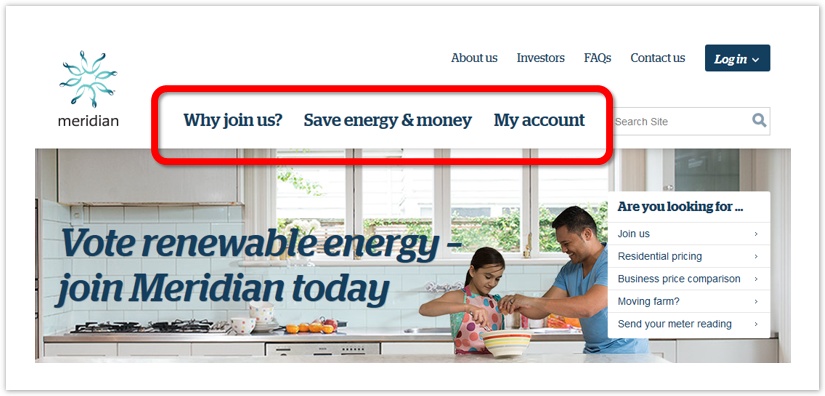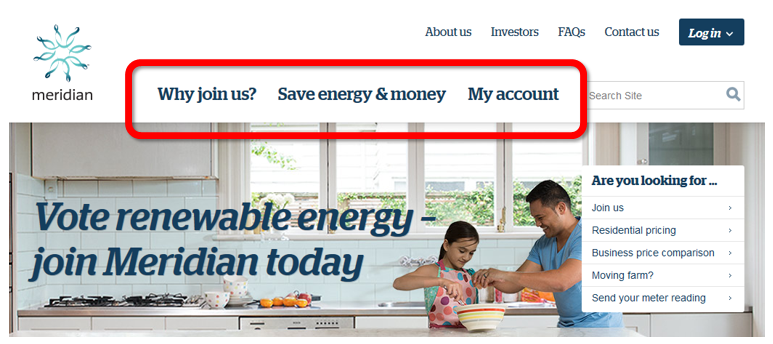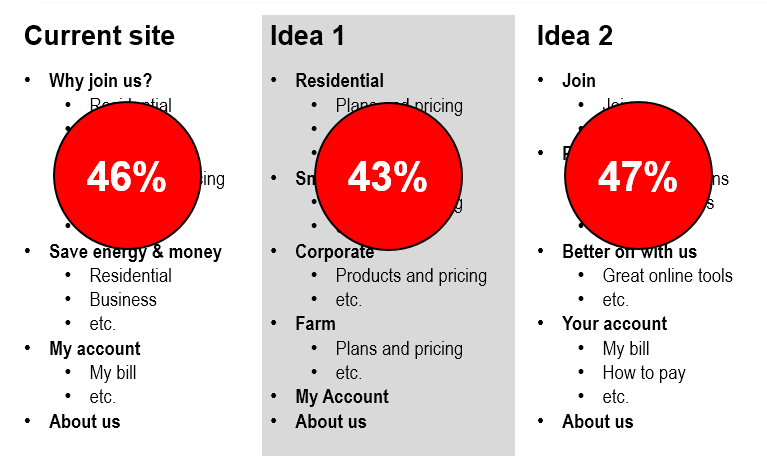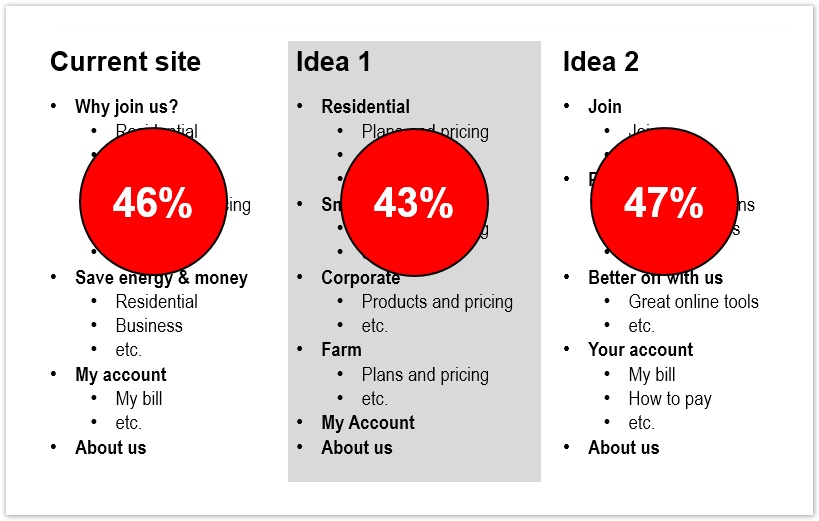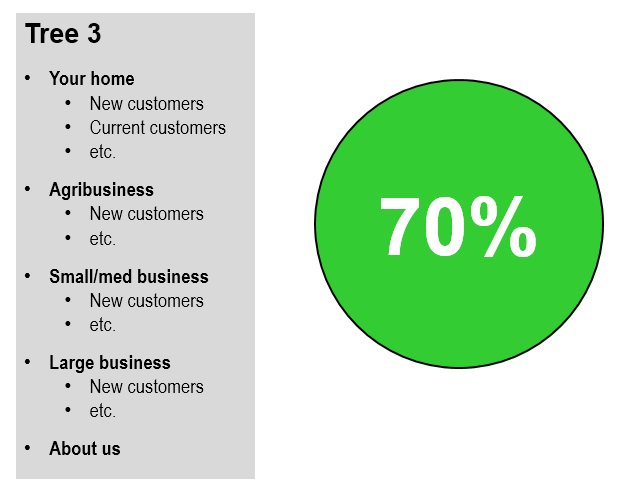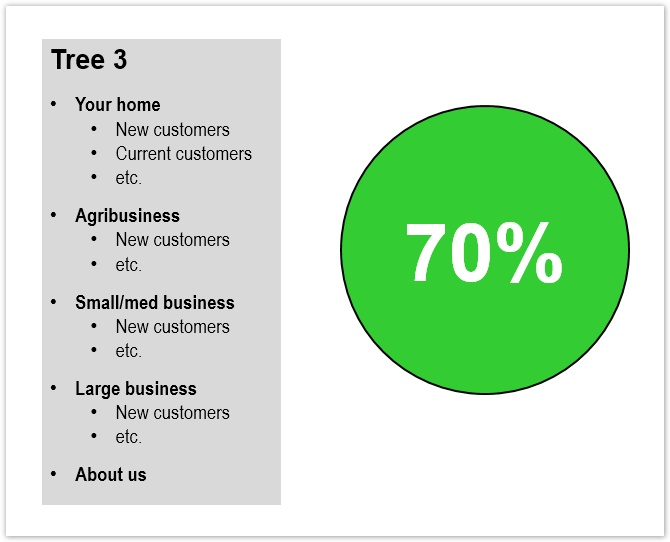...
In the design phase of a project, it’s a mistake to create just a single new site tree.
Going wide – testing several alternatives at once
...
The smart thing to do here is “go wide” – that is, generate several different site trees to exercise our various ideas, then pick the 2 or 3 most promising trees to test against each other.
This may seem like a lot of extra work, but it’s not. It turns out that trying to settle on a single tree at this stage is usually very difficult. There are different groupings to try, different terms to try, and (if we’re working with a team) diverging ideas from other members. We’ve found it easier to generate several trees that incorporate these inputs than it is to try hacking and slashing them all in a single structure.
...
For more on going wide in UX design, see Jared Spool's short article on exploring multiple variations.
Data for the CEO
Consider also that the “other members” that we get input from might include the CEO. And (trust us), if we need to shoot down their out-of-left-field idea, it’s much easier to do that with objective data from testing than just our personal opinions. ![]()
Guarding against genius design
Perhaps most importantly, testing lots of ideas early on avoids the peril of genius design. By that, we mean designers who believe they are talented, and tend to believe that all their ideas are good ones.
If we have a “genius” designer on the project, we must tread very carefully. Because when a designer falls in love with a single idea early on, it’s really hard for them to get away from it.
Learning from other industries
Fixing on a single idea too early is not a new problem. Other industries encountered this (and solved it) years ago.
...
It brings to mind the advertising person who said that if they went away and worked and then came back with a single idea to pitch, they would be fired on the spot.
Going wide – an example
For an example of testing alternative ideas, let's look at Meridian Energy, a renewable-power company that needed to redesign its site tree.
When they ran an open card sort with their users, the results suggested that the current top-level headings didn’t match their mental model.
So they brainstormed a bunch of ideas, and decided that two of them were worth testing. They set up three tree tests - the two ideas plus the current site.
When the results came back a week later, the current tree perform poorly (as they expected). But so did the two new ones:
Obviously, they were not happy about this. Time to start over, right?
...
So, in round 2, they created a third tree that was a hybrid of the best of the earlier designs. And the third tree proved to be the charm:
...
Next: Putting it all together
...
